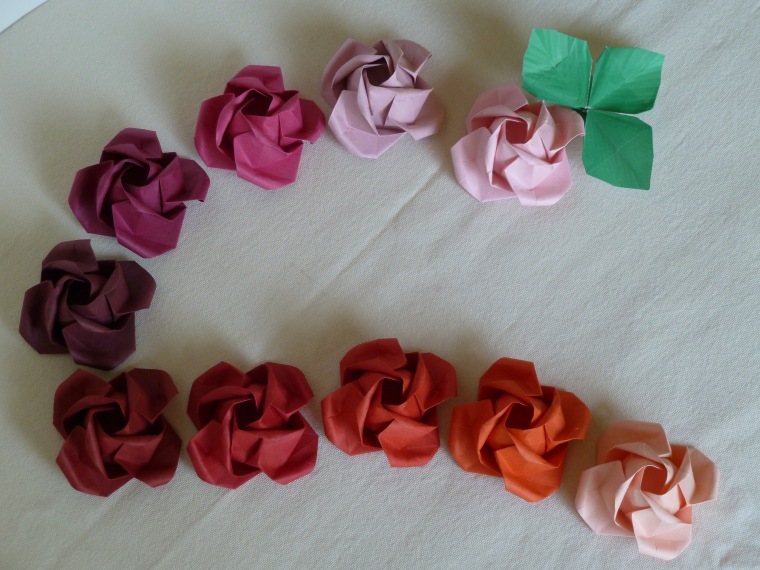

Here are twelve Kawasaki roses in all the different shades of red! The rose leaf pictured is a rose leaf also designed by him. I curled the petals of each rose to give them a more lacy effect with a method called wet-folding. After I had folded the completed rose, I lightly sprayed them one at a time with water from a spray bottle to soften the paper, and carefully curled the petals to taste. After they dried in the sun, the paper naturally curled in a much more delicate way than dry paper can achieve. When soft curves are needed wet-folding can make all the difference.
Kawasaki roses are created by twisting the paper around itself to create multiple layers of petals. They are some of my favorite flowers to fold because the design is ingenious and the product stunning. Bouquets of these roses brighten up the house, and select beauties make perfect gifts.
Here are three more roses I folded at a music camp which are four times as large.

Folded by Sophie Usherwood
Designed by Toshikazu Kawasaki.





















